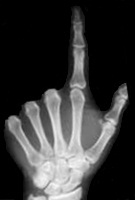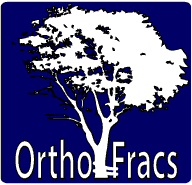Journal Club
May 2010
Prevalence of Malformations of the Hip Joint and Their Relationship to Sex, Groin Pain, and Risk of Osteoarthritis
- Authors: Kasper Kjaerulf Gosvig, Steffen Jacobsen, Stig Sonne-Holm, Henrik Palm and Anders Troelsen
- Institution: Department of Orthopedic Surgery, Copenhagen University Hospital of Hvidovre, Hvidovre, Denmark
- Journal: J Bone Joint Surg Am. 2010;92:1162-1169.
Reviewed by
Dr Emily Kong
MBBS | Accredited Orthopaedic Registrar
Introduction
- To determine the prevalence of:
- Acetabular dysplasia
- Coxa profunda +/- protrusio acetabuli
- Pistol grip deformity
- Acetabular dysplasia
- To determine the prevalence of groin pain associated with the above
- To estimate the adjusted risk of development of hip OA when these abnormalities are present
Methodology
- Data retrieved from the Copenhagen Osteoarthritis Substudy:
- Copenhagen City Heart Study I-III:
- Survey of a predominantly white adult cohort
- Country of Osterbro: 60,000 residents
- Copenhagen City Heart Study I-III:
- Databases approved by Danish Ethics Committee:
- No additional approvals are required for data processing
- 4151 individuals chosen between 1991-1994
- AP wt bearing XR of all participants
- 1533 men:
- Mean age 62
- Range 23 to 93
- 2618 women:
- Mean age 65
- Range 22 to 92
- Exclusion Criteria:
- THJR (1.7%)
- Perthes disease (0.6%)
- Childhood hip disease (0.8%)
- Rheumatoid arthritis (3.4%)
- Unreadable radiographs (4%)
- Study group = 1332 men, 2288 women
- Hips were categorised into five groups based in radiographic discriminators:
- No malformations
- Acetabular dysplasia
- A deep acetabular socket (coxa profunda, protrusio)
- Pistol grip deformity
- Combination of a deep socket + pistol grip deformity
- No malformations
- XR and responses to a questionnaire completed at the time of the XR were evaluated to determine:
- Prevalence of hip malformations, groin pain and hip OA
- Relationship between osteophytes and pistol grip deformity
- Risk estimates of development of OA
- Distribution of malformations in hips with OA
- Radiographic evaluation:
- Pistol grip deformity:
- Triangular index ≥0mm
- Triangular index ≥0mm
- Acetabular dysplasia:
- Centre edge angle of Wiberg ≤20°
- Centre edge angle of Wiberg ≤20°
- Deep acetabular socket:
- Centre edge angle ≥45°
- Centre edge angle ≥45°
- Osteoarthitis:
- Minimum joint space width ≤2mm
- Osteophytic changes assessed by a radiologist
- Minimum joint space width ≤2mm
- Pistol grip deformity:
- Questionnaire-based evaluation:
- Completed at the time of radiograph
- Inquired about pain in the lower back and extremities
- Only 1 question was relevant to the study: pain in one or both hips or groin
Results
- Overall prevalence:
- Acetabular dysplasia:
- 4.3% men, 3.6% women
- 4.3% men, 3.6% women
- Deep acetabular socket:
- 15.2% men, 19.4% women
- 15.2% men, 19.4% women
- Pistol grip deformity:
- 19.6% men, 5.2% women
- 19.6% men, 5.2% women
- Combination deep socket + pistol grip:
- 2.9% men, 0.9% women
- 2.9% men, 0.9% women
- Acetabular dysplasia:
- No significant difference in prevalence of groin pain between groups with or without hip malformations (p>0.13)
- No significant relationship between presence of osteophytes and pistol grip deformity (p>0.086)
- No association between presence of osteophytes, pistol grip deformity and joint space width:
- ≤2mm (p>0.768)
- >2mm (p>0.102)
- ≤2mm (p>0.768)
- Risk ratio for deep acetabular socket (RR2.4) and pistol grip malformation (RR2.2) were significantly elevated
- (p<0.001)
- (p<0.001)
- No significant correlation between:
- OA and acetabular dysplasia (p=0.053)
- OA and sex (p=0.063)
- OA and BMI (p=0.576)
- OA and acetabular dysplasia (p=0.053)
- Age was a significant risk factor (p<0.001)
- Overall prevalence of hip OA:
- 9.5% men, 11.2% women
- 9.5% men, 11.2% women
- Of pts with radiological evidence of OA overall prevalence of concomitant:
- Acetabular dysplasia:
- 3.1% men, 2.7% women
- 3.1% men, 2.7% women
- Deep acetabular socket:
- 27% men, 28.3% women
- 27% men, 28.3% women
- Pistol grip deformity:
- 30.2% men, 5.0% women
- 30.2% men, 5.0% women
- Combination deep socket + pistol grip deformity:
- 10.5% men, 0.6% women
- Acetabular dysplasia:
Discussion
- pistol grip deformity is primarily a malformation in men
- study supports theory that pistol grip malformation is secondary to symptomatic or asymptomatic slipped capital femoral epiphysis
- deep acetabular socket (coxa profunda and/or protrusio acetabuli) is a common malformation in the population along with pistol grip malformation.
Pros of Study
- Large cohort size
- Large population-based investigation
- Standardisation of radiographs according to a protocol
Cons of Study
- Cross-sectional design: limits assessment of cause and effect relationships
- AP XR only: underestimation of prevalence
- Study cohort advanced age
- Questionnaire to evaluate groin pain not validated
Take home message
- no significantly increased prevalence of groin pain in subjects whose radiographs showed hip joint malformations
- A deep acetabular socket and pistal grip deformity was a significant risk factor for the development of osteoarthritis
Webpage Last Modified:
24 May, 2010



